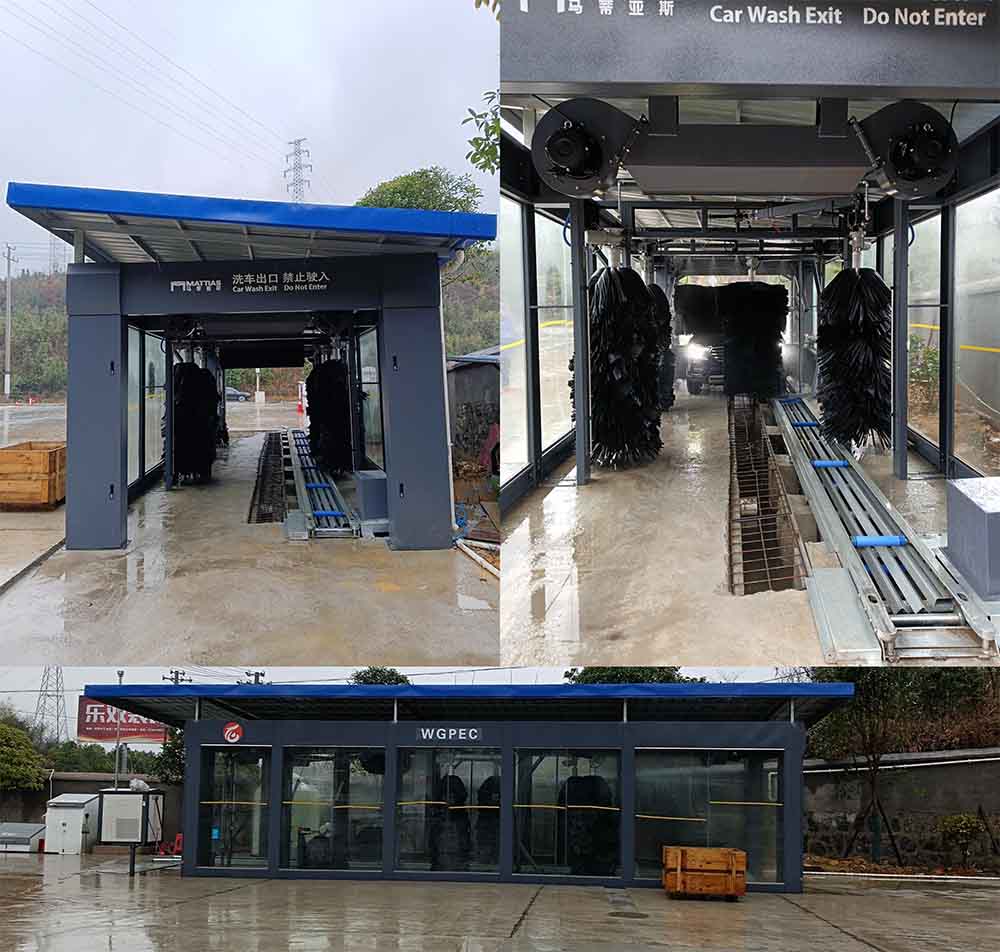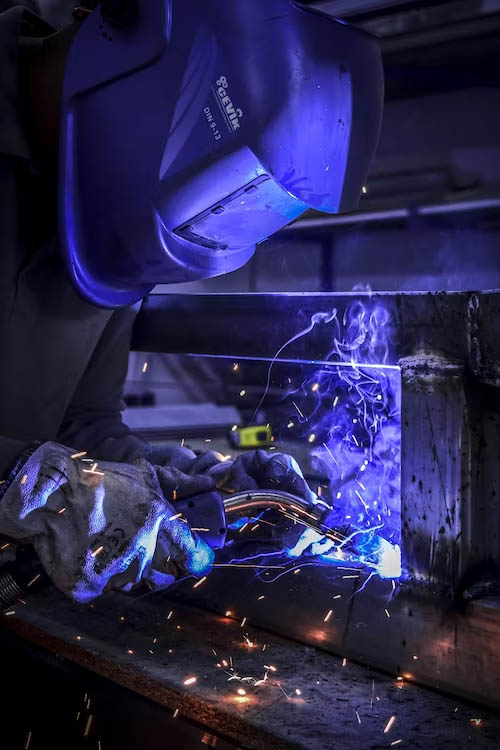The car wash industry is evolving rapidly, driven by advancements in automation, sustainability, and consumer demand for convenience. As urbanization and vehicle ownership surge, automatic car washes have become a lucrative investment. However, building one in 2025 requires navigating complex financial, regulatory, and technological landscapes. This comprehensive guide breaks down the automatic car wash cost, innovations, and strategies to help entrepreneurs and investors succeed in this competitive market.
Chapter 1: The Rising Demand for Automatic Car Washes
1.1 Market Trends Shaping the Industry
- Urbanization: By 2025, 60% of the global population will live in cities, increasing demand for time-efficient services.
- Sustainability Mandates: Governments enforce stricter water/energy regulations, favoring eco-friendly car washes.
- Subscription Models: Membership-based revenue (e.g., unlimited washes for $30/month) boosts customer retention.
1.2 Why Automation Wins
- Labor Shortages: Automated systems reduce reliance on manual labor, which is scarce post-pandemic.
- Consistency & Speed: AI-driven systems deliver flawless washes in under 5 minutes, appealing to time-strapped customers.

Chapter 2: Cost Breakdown for Building an Automatic Car Wash in 2025
2.1 Land Acquisition: Location is Everything
- Urban vs. Rural: A 0.5-acre urban lot in Los Angeles could cost 2M+, while rural Texas may be under2M+, while rural Texas may be under 500K.
- Zoning Challenges: Proximity to residential areas often triggers noise/water runoff restrictions.
- Case Study: A tunnel wash in Phoenix saved $300k by purchasing land near a highway exit with high traffic but lower property taxes.
2.2 Permits and Licenses: Navigating the Red Tape
- Environmental Compliance: Water reclamation systems are mandatory in drought-prone states like California, adding 100k–200k.
- Utility Approvals: Securing water/electricity permits in regulated markets can take 6–12 months.
2.3 Construction and Site Preparation
- Building Design:
- Tunnel Washes: Require 150-ft structures with reinforced foundations for conveyor systems (1.2M–2.5M).
- In-Bay Automatics: Compact designs (40–60 ft) cut construction costs by 30% compared to tunnels.
- Site Work:
- Drainage systems prevent flooding but add 50k–100k.
- Solar-ready roofing costs 15% more upfront but slashes energy bills long-term.
2.4 Equipment and Technology: The Heart of Automation
- In-Bay Systems:
- Touchless vs. Soft-Touch: Touchless systems (high-pressure water/chemicals) cost $200k+ but reduce vehicle wear claims.
- Add-Ons: Ceramic coating stations ($20k/unit) attract premium customers.
- Tunnel Systems:
- Conveyor Belts: 300k–600k for high-speed models processing 120+ cars/hour.
- AI Integration: Cameras and sensors adjust water/brush pressure based on vehicle size, adding 150k–300k.
- Water Reclamation:
- Closed-loop systems recycle 90% of water, complying with EPA regulations but requiring $200k+ investments.
2.5 Utilities and Energy Infrastructure
- Electric Vehicle (EV) Compatibility:
- Installing EV charging stations (10k–30k/unit) future-proofs your business.
- Energy Costs:
- Solar panels reduce monthly bills by 40–60%, with a 5–7-year ROI.
2.6 Contingency and Soft Costs
- Unexpected Delays: Supply chain disruptions could inflate equipment costs by 10–20%.
- Staff Training: VR simulations for equipment operation cut training time by 50%.
Chapter 3: Total Cost Estimates for 2025
3.1 In-Bay Automatic Car Wash
- Budget: 1.8M–5M+
- Breakdown:
- Land: 500k–1.5M
- Equipment: 150k–300k
- Construction: 750k–2M
3.2 Tunnel Car Wash
- Budget: 3M–10M+
- Breakdown:
- Land: 1M–2M
- Equipment: 500k–1M
- Construction: 1.5M–4M
Chapter 4: Critical Variables Impacting Costs
4.1 Regulatory Hurdles
- Water Usage Laws: Arizona mandates 85% water recycling, requiring advanced filtration systems.
- Noise Ordinances: Soundproofing tunnel washes adds 50k–50k–100k in dense urban areas.
4.2 Technological Disruptions
- AI and IoT: Predictive maintenance software cuts downtime by 30% but costs $50k/year.
- Contactless Payments: Biometric scanners increase customer throughput but require 20k–20k–40k upgrades.
4.3 Inflation and Supply Chain Risks
- Steel Prices: Up 12% annually since 2021, raising equipment costs.
- Labor Shortages: Construction wages have surged 8% year-over-year in the U.S.
Chapter 5: Strategies to Maximize ROI
5.1 Financing Options
- SBA Loans: Offer 10-year terms with 5–7% interest for qualified borrowers.
- Equipment Leasing: Avoid upfront costs by leasing tunnel systems for 10k–20k/month.
5.2 Marketing and Customer Retention
- Loyalty Apps: Geolocated push notifications boost repeat visits by 25%.
- Partnerships: Collaborate with gas stations or EV charging networks for cross-promotion.
5.3 Sustainability as a Profit Driver
- Tax Credits: The U.S. Inflation Reduction Act offers 30% rebates for solar installations.
- Brand Value: Eco-certifications attract environmentally conscious millennials (45% pay a premium for green services).
Chapter 6: Future-Proofing Your Investment
6.1 Emerging Technologies
- Robotics: Drying arms with microfiber towels eliminates towel waste.
- Hydrogen-Powered Systems: Pilot projects in Europe aim to cut energy use by 50% by 2030.
6.2 Adapting to EV Trends
- Battery Cleaning: Specialized undercarriage washes for EVsto prevent corrosion ($30k equipment upgrade).
- Charging Stations: Offer free charging with premium wash packages.
Conclusion
Building an automatic car wash in 2025 is a high-risk, high-reward endeavor. While costs are steep—ranging from 1.8Mforabasicin−baysystemto1.8Mforabasicin−baysystemto10M+ for a premium tunnel wash—strategic planning can mitigate risks. Prioritize locations with high traffic and lax regulations, invest in AI and sustainability, and leverage financing to ease cash flow pressures. As vehicles and consumer preferences evolve, staying ahead of technology and regulatory curves will ensure long-term profitability in this dynamic industry.
Final Word: Consult local engineers, environmental agencies, and industry veterans to refine your budget and design. The road to success is paved with data-driven decisions—and a spotless wash!
FAQ: Building an Automatic Car Wash in 2025
1. How much does it cost to build an automatic car wash in 2025?
How much does it cost to build an automatic car wash in 2025?
The total cost ranges from $1.8 million to $10 million. Key factors include location, equipment type (touchless vs. soft-touch), and compliance with sustainability regulations like water reclamation systems.
2. What’s the difference between a tunnel car wash and an in-bay automatic car wash?
- Tunnel Car Wash: Uses a conveyor belt to move vehicles through multiple cleaning stages. Costs 40,000–100,000+ but processes 120+ cars/hour.
- In-Bay Automatic Car Wash: Vehicles remain stationary while equipment rotates around them. Costs 10,000–40,000+ and suits smaller spaces.
3. Are water reclamation systems mandatory?
Yes, in many regions like California and Arizona. These systems recycle 85–90% of water and add 100,000–200,000 to your budget. Drought-prone areas enforce strict penalties for non-compliance.
4. What permits are needed to build a car wash?
Common permits include:
- Environmental permits (water usage, runoff).
- Zoning approvals (noise, traffic impact).
- Utility permits (water, electricity, drainage).
Costs range from 10,000–50,000, depending on local regulations.
5. How can I reduce long-term operational costs?
- Install solar panels (cuts energy bills by 40–60%).
- Use AI-driven maintenance software to reduce downtime.
- Offer subscription plans to stabilize revenue (e.g., $30/month unlimited washes).
6. Is EV compatibility important for a 2025 car wash?
Yes. EV owners are a growing demographic. Consider:
- EV charging stations (10k–30k/unit).
- Battery-safe undercarriage washes ($30k upgrade).
These features attract eco-conscious customers and future-proof your business.
7. How does inflation impact car wash construction costs?
Steel, labor, and equipment prices are rising 5–8% annually. For example:
- Construction wages increased 8% year-over-year.
- Tunnel conveyor systems now cost 12% more than in 2021.
Include a 10–15% contingency fund to buffer these risks.
8. What’s the ROI timeline for a car wash?
Most investors see returns in 3–5 years, depending on location and demand. High-traffic urban washes with loyalty programs (e.g., app-based memberships) achieve faster payback.



